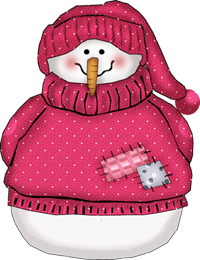primary-schooler
MBOW SOSH #23
d. armavir
Purpose:
- teach children to perceive various transport and non-vehicles on the road as obstacles, objects that “hide danger”;
- introduce into the speech everyday life of students the concept of “closed review”;
- teach the ability to predict the situation on the roads in the presence of fixed vehicles and non-vehicles;
- Continue to work on the formation of habits to navigate the sounds of the street;
- form special transport habits and the ability to switch from household habits to transport.
Equipment
Contours of transport and non-vehicles made of cardboard, a table on the board "Closed review", a set of pictures with road situations, a textbook-book "Health lessons", pencils, scissors, glue.
Class progress
1. Organizational moment
2. Checking homework:
Ugh.Now we will check how you placed the road signs in the notebook and why. One representative from each row is called to the board, the rest of the students listen to the answers of the children and evaluate their correctness and completeness (pages 73-75 of the textbook notebook).
3. Updating the knowledge of students and communicating the topic of the lesson
Ugh.Remember what we did in the last lesson.
D.We went on a tour of the streets of the city.
Ugh.Where have we been?
D.On Kropotkin Street, Chekhov, Owl. Army, Lavrinenko.
Ugh.Where is an unregulated intersection near the school?
D.On Lavrinenko and Kropotkin Street.
Ugh.Why is it called unregulated?
D.There's no traffic light or traffic controller at this intersection.
Ugh.Where is the regulated intersection?
D.At the intersection of Owls. Army and Lavrinenko.
Ugh.Why is it regulated?
D.There's a traffic light at the intersection.
Ugh.What unusual things did you remember during this tour?
D.We closed our eyes near the intersections and listened to the street.
Ugh.What did you hear?
D.They heard how cars brake - the noise and the screeching of the brakes, how the engine works at a car standing at the intersection, how the noise from the car changes when it turns or moves from a place ...
Ugh.Why did we learn to listen to the street?
D.To be able not only to see the situation on the road, but also to hear it. Our ears help our eyes on the road.
Ugh.Today in class we learned about the concept of “closed review”.
4. Work on the topic of the lesson
On the board prepared table "Closed review", the elements of which are closed to the beginning of work. The table opens gradually, as its elements are called children.
Ugh.On the tour, the view of the road was hindered by the corner of the house. Remember what other obstacles you encountered when you walked with your parents or went to school.
D.Busts, trees, telephone box, right stops, fence...
Ugh.What is a “closed review”?
D.When something stops you from seeing the situation on the road.
Ugh.That’s right, a “closed view” is a situation on the road where the danger is hidden from the pedestrian by bushes, trees, standing and moving cars, other pedestrians.
Then the children perform independent work on the textbook - notebooks (page 76).
Read the words in columns, you can read "chain". What do they mean? How do you define this as a general concept?
D.These are obstructive objects.
Ugh.Connect the word with the object it denotes, and then with the circle in the center of the picture.
The children perform the teacher's task. Then they do a check. What difficulties did you encounter while doing the job?
D.In the columns the word “truck” is written, and a minibus is drawn. (there is a pile of sand, but there is no drawing of a snowdrift).
Ugh.What does a snowdrift look like?
D.A pile of sand, but it's white.
Ugh.So, in this case, we and snowdrift, and a bunch of sand denote in one word.
After checking, the children play out the situation on the demonstration carpet – a layout. Today in the lesson we will analyze the most important for us situations of “closed review” – fixed transport and fixed non-vehicles. What word is particularly important here?
D.Still. All of them will be standing, even cars.
Ugh.What vehicles do you know?
D.Bus, trolleybus, tram, truck, car, minibus.
Ugh.What non-vehicles do you know?
D.Drought, bushes, telephone box, trees, houses, fences...
As the conversation progresses, a new table is filled in on the board.
|
Transportation |
Non-transportable |
Ugh.Now, from the set of pictures, choose those situations that suit our current topic.
Children choose 3-4 situations and play them out. Imagine that you have the magical ability to see everything through objects. What would have happened then?
D.We would see everything that happens behind the interference. It would be easy for us to cross the road as we would all see.
Ugh.Does a person actually have this property?
D.Nope.
Ugh.So we need to learn to anticipate the situation. That's what we're going to do.
The class is divided into 3-4 groups, each group is offered one of the selected situations for playing. Students choose the contours of the symbols of the means necessary for acting out the situation. Let us consider one situation in detail:
The boy ran out of the house, on the side of the road was a truck, in the cab of which there was no driver. The boy ran across the road in front of the truck as no other cars were visible. He was hit by a car.Why didn't the boy notice the car?
D.Because the truck was closing it.
Ugh.How do I know if a car is approaching?
D.Engine noise. According to the behavior of pedestrians on the opposite side: if they do not cross the street, but wait, then the situation is not favorable for the pedestrian. Looking carefully from behind a standing truck. Getting away from the truck so it doesn't close the view.
Ugh.We have reviewed several situations and now we need to draw a conclusion: what actions should be taken on the road to protect yourself?
D.Look around and determine if there is a “closed review” situation. If there are objects that interfere with the view, never go out on the road without looking carefully because of them.
Be able to hear danger (repeat what we can hear). Pay attention to pedestrians on the opposite side: their behavior can tell us that everything is safe on the road. The class is divided into 4-5 people and performs independent work from page 77 of the textbook. Each group works with one application. After completing the task, a check is made: each group comes out with its own application to the board and shows the finished work. Mistakes are dealt with immediately.
5. Lesson outcome
The teacher conducts a frontal survey, then asks a question for the curious.
Ugh.Can the driver of the car have a “closed review” situation? In what cases?
D.Standing still means closes the view of both the pedestrian and the driver.
6. Homework.
Ugh.Together with your parents, draw your way from school to home and mark the traps of “closed review”.
{module Yandex}





